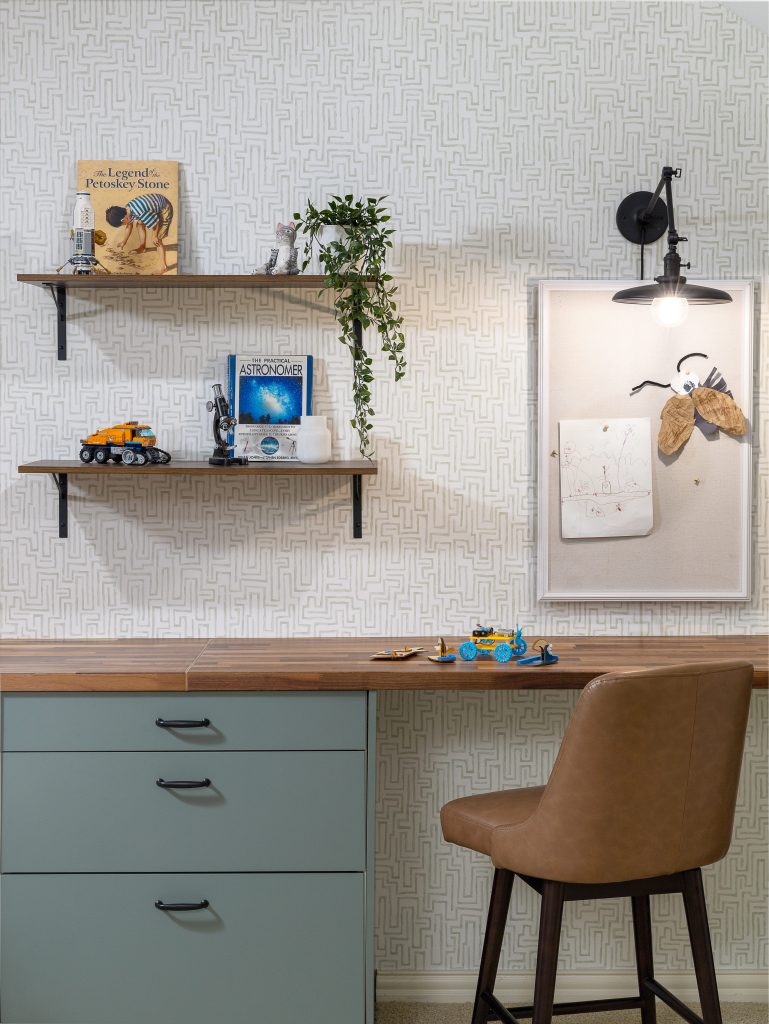
This month we opened up our Instagram to answer your design dilemmas! Here are some of the questions we received:
“I have a square dining room, 13x13ft, would you put a round or rectangular table? Size?”
For a square dining room measuring 13x13ft, both round and rectangular tables can work. A round table can soften the room’s angles and create a more intimate dining space, while a rectangular table can maximize seating capacity and work well with the room’s proportions. Consider the number of people you want to accommodate and the traffic flow of the room when deciding on the size. (Traffic flow is the entrances and exits of the room). Just keep in mind that while planning the space, you want to make sure that you have at least 3 feet of space for the dining chairs. So whether you’re using a piece of furniture along the walls, or keeping it open, make sure you have 3′ from the table to the wall or from the table to a piece of furniture.
“How do I know if I should choose a round coffee table or a rectangular coffee table?”
When choosing between a round or rectangular coffee table, consider the shape and layout of your seating area. A round coffee table tends to work well in small or compact spaces as it allows for easier movement around it. It can also soften sharp edges in a room with angular furniture. This works particularly well for symmetrical sectionals where the length is even on both ends. A rectangular coffee table can be a good choice for longer seating areas, providing a more defined and structured look. The best way to determine what size coffee table you need is to measure with this rule in mind: The chair or sofa should be between 12-18 inches from the edge of the coffee table. Too far, and it will be difficult to reach to set your drink, too close and it can become a hazard. If you prefer a round coffee table, but the shape of the sitting area is long, that’s okay too. Just make sure the chairs or sofa that can’t reach the coffee table, have access to a side table or other surface to set a drink if need be.
“Any tips for combining patterns?”
Combining patterns can add visual interest to a space. When mixing patterns, consider the scale and style of the patterns to create a cohesive look. Aim for a mix of large, medium, and small-scale patterns to provide balance. Opt for patterns that share a similar color palette or theme to create a harmonious effect. Additionally, consider using solid colors or neutral elements as a grounding base to allow patterns to stand out without overwhelming the space.
“My home’s floors are a very orangey color, is there anything I can do to balance this out without purchasing all new flooring?”
If your home’s floors have a strong orangey color, you can balance it out by incorporating complementary colors in your decor. Choose furniture, accessories, and textiles in cooler tones like blues, greens, or grays to neutralize the warm tones of the floor. Also using dark and light tones of these complimentary colors in the walls (such as painting or wallpapering) will add depth and visual interest. Additionally, you can use rugs to visually alleviate the dominant color by selecting ones with a pattern or colors that help to divert attention from the floor. Lighting also has a profound impact on the space! If you have very warm lighting (2000k), consider changing out the bulbs for a slightly cooler tone (3000k or 4000k for kitchens and bathrooms). Incorporating decorative elements like curtains and artwork that coordinate with your desired color scheme can also help to create a harmonious balance in the overall aesthetic of the space.
“What size rug should I do with a large sectional? The sectional seems to take up all of the rug, should I size up?“
When it comes to selecting a rug for a large sectional, it’s generally recommended to opt for a size that accommodates the entire seating area. Ideally, the front legs of the sectional should be placed on the rug to create a cohesive and visually connected space. If the sectional is taking up all the rug space, consider sizing up the rug to ensure that it not only complements the scale of the sectional but also defines and anchors the seating area. This will help to create a more balanced and visually pleasing look in the room.
“How can I create a cohesive color scheme throughout my whole home without every room looking the same?”
To create a cohesive color scheme throughout your whole home, start by selecting a base color or a neutral palette that will serve as a consistent element across different rooms. This color can be used for foundational elements like walls, larger furniture pieces, or flooring. Then, choose complementary or coordinating colors to add variety and interest in each room while still maintaining a connection to the base color. Use accent colors in smaller doses to tie the different spaces together. Consider repeating certain colors or patterns in different rooms to create a sense of continuity. Additionally, using consistent materials, finishes, or textures throughout the home can also help to create a cohesive look.
Did we answer your question? If not, be on the lookout on our instagram @rebekahnicoleinteriors for the next opportunity to share your design dilemma on our Story!